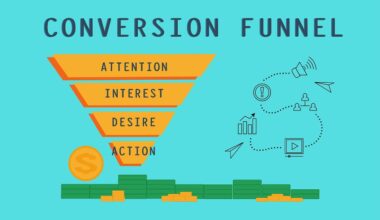Service Market Sizing vs Product Market Sizing: Key Differences
Understanding market sizing is crucial for businesses aiming to strategize effectively. Market sizing can be split into two primary categories: service market sizing and product market sizing. These concepts enable companies to assess their respective positions in various industries. Service market sizing focuses on estimating the potential revenue and customer base for services offered, while product market sizing deals more with tangible goods. Both approaches require thorough research and analysis to ensure accurate estimations. When dealing with service market sizing, businesses often delve into customer demographics, buying patterns, and service delivery channels. Consequently, the process is more qualitative, relying on interviews and surveys. On the other hand, product market sizing frequently leans towards quantitative data, involving sales figures and market trends. Thus, understanding these methodologies is key for businesses aiming to carve out a niche in competitive landscapes. The distinctions not only affect the approach taken, but also the outcomes, influencing strategic decisions and market entries in both sectors.
The approach to data collection significantly varies between service and product market sizing. In service market analysis, practitioners utilize qualitative methods, focusing on customer satisfaction, feedback, and specific service needs. This may involve conducting focus groups or gathering testimonials, yielding rich data on consumer perceptions and behaviors. Conversely, product market sizing often utilizes quantitative methods for gathering data, including statistical analysis and sales figures. This trend allows for a clearer picture of market demand, competition, pricing strategies, and consumer buying behavior toward various products. As market dynamics shift, rightly adapting these sizing methods becomes crucial for sustaining growth. The alignment of methodologies to the specific market context can significantly impact the quality of insights drawn from the analysis. Therefore, understanding the unique characteristics of each market is paramount in obtaining valid data. For businesses passionate about strategic planning and expansion, grasping the nuances between service and product market sizing will not only enhance accuracy but also foster informed business decisions that can lead to improved competitiveness.
Target Audience Identification
Identifying the target audience plays a pivotal role in market sizing, significantly influencing strategic initiatives. In service market sizing, companies typically create customer personas based on attributes such as age, income, and lifestyle choices. This personalization facilitates a deeper understanding of how services meet specific customer expectations, helping to tailor offerings accordingly. For instance, a financial advisory service may target individuals aged 30-50 with disposable income and a need for investment guidance. In contrast, product market sizing demands a more general segmentation approach, looking at broad categories to identify demographics that may purchase certain goods. For example, a smartphone manufacturer may segment its market demographically and geographically to capture a larger audience. By contrasting these audience identification methods, businesses can better understand where and how to focus their efforts and resources. Effective targeting not only enhances marketing efficiency but also maximizes customer satisfaction. Thus, distinguishing between target audience strategies for services and products can drive enhanced connection with potential clients and improve profitability.
Another significant difference between service and product market sizing lies in their lifecycle analysis. Service-oriented businesses often experience a dynamic service lifecycle characterized by variability in demand, influenced by factors such as social trends and economic fluctuations. Therefore, aligning service offerings with current market demands is essential to remain competitive. Product market sizing, however, generally follows a more linear product lifecycle consisting of stages like introduction, growth, maturity, and decline. Understanding where a product lies in its lifecycle aids businesses in maximally leveraging profits and making timely adjustments. For instance, a product nearing the decline phase might require a reevaluation of marketing strategies or possible reinvention. Service businesses often conduct periodic assessments to ensure relevancy to evolving customer needs. The distinctions in life cycles impact not only pricing but also promotional tactics and distribution strategies. Consequently, comprehending these nuances helps businesses adapt their market strategies effectively, ensuring they remain aligned with consumer expectations at every point within the market’s evolution.
Research Methodologies
Research methodologies employed in market sizing can differ significantly between service and product markets. Service market sizing often employs a mix of qualitative and quantitative research methodologies to derive insights, focusing on human factors and subjective experiences. This involves conducting various forms of research such as interviews, surveys, and market observations, ensuring comprehensive data collection. Alternatively, product market sizing frequently emphasizes quantitative analysis, relying on sales data, historical data trends, and consumer purchasing patterns. This shift toward hard data allows organizations to make informed projections about product demand and feasibility. While both methodologies aim to uncover valuable information, their applications reflect differing objectives. Companies dedicated to service market research formulate their inquiries around understanding customer experiences and expectations. In product markets, however, research is directed at revealing measurable outcomes, leading to concrete projections. As a result, recognizing these methodological distinctions enables businesses to choose appropriate frameworks that will yield the most meaningful data aligned with their strategic goals.
The scope and scale of research carried out in service and product market sizing vary considerably. Businesses conducting service market sizing often utilize smaller sample sizes while emphasizing in-depth analysis and contextual understanding. Depending on the nature of the service, limited geographical consideration can also apply, with companies capturing exclusive market segments. In contrast, product market sizing generally involves wider scopes with larger sample sizes, emphasizing broader demographic reach. Such comprehensive research captures diverse consumer perspectives, making it crucial for accurate sales predictions. The scale incorporated into market sizing processes can significantly affect results and insights derived. For instance, the implications of relying on smaller sample sizes may lead to misrepresented service expectations if not approached carefully. Therefore, businesses aiming for accuracy must be mindful of the chosen research techniques and their associated implications. Effective health checks on sample sizes must happen at various intervals to assure data integrity and representation of the broader market trends, ensuring holistic strategies in market planning.
Implications for Strategy Development
Understanding the key differences in service and product market sizing has profound implications for strategy development. Companies must acknowledge that success in service markets often depends on establishing strong customer relationships. With service market sizing, businesses are encouraged to create targeted strategies based on consumer needs and preferences, allowing for personalized service delivery. In contrast, those focused on product markets may prioritize aspects such as pricing and distribution channels to appeal to broader audiences, fully capitalizing on market size. This strategic divergence significantly influences resource allocation decisions, marketing efforts, and overall operational efficiency. By embracing the nuances of these approaches, businesses can develop well-calibrated strategies that optimize opportunities in their respective arenas. Furthermore, the understanding of objectives and methodologies at play can enhance collaboration between teams, leading to high-level execution on strategic initiatives. Businesses stand to benefit greatly by aligning their goals with the preferences of their chosen markets, paving the way for growth and sustainability.
The differences between service and product market sizing create unique challenges and opportunities for businesses. A detailed understanding of these distinctions enables organizations to make informed decisions, enhancing financial performance and overall market positioning. Organizations that invest time in comprehending how to tailor their strategies accordingly can respond proactively to consumer demands and shifts in market conditions. Recognizing the importance of both qualitative and quantitative approaches drives refined market analysis, leading companies to effectively bridge the gap between what consumers want and what the market offers. By establishing well-defined processes for both service and product market sizing, organizations not only enhance their forecasting accuracy, but they also enrich their innovation capabilities. Emphasizing ongoing research and evaluation contributes significantly to developing futuristic concepts, aligning products and services with anticipated trends. Ultimately, businesses that embrace the distinctions between these sizing methodologies will be better equipped to navigate the complexities of their respective markets and foster lasting competitive advantage.


